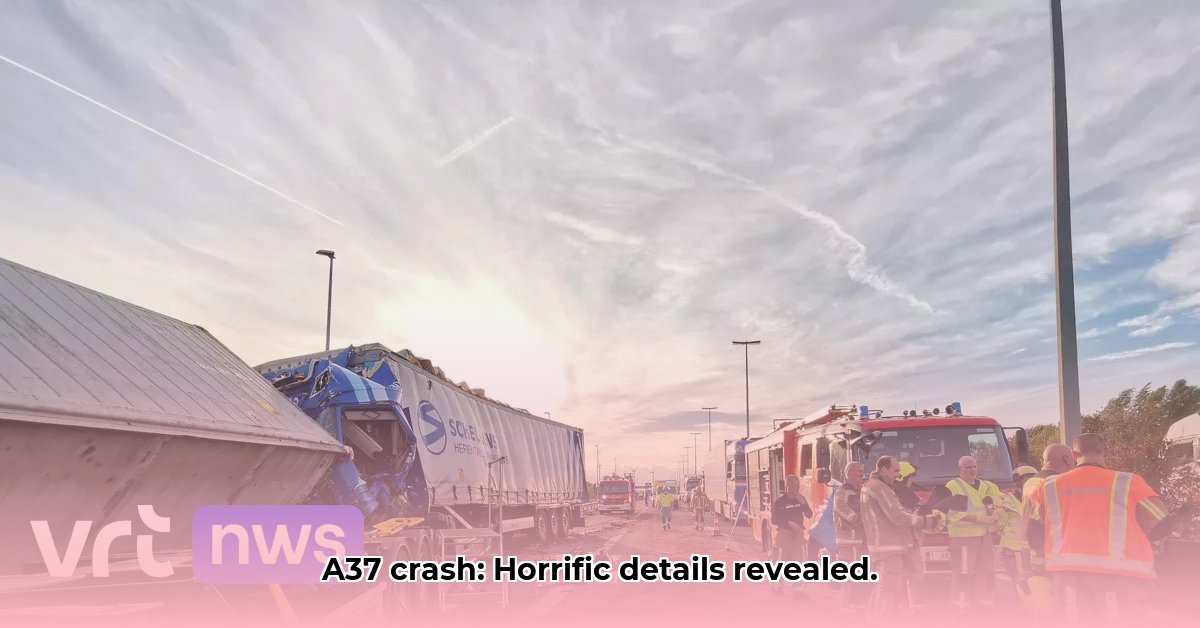
A Fatal Truck Crash Near Holsloot
A single-vehicle HGV (Heavy Goods Vehicle) accident on the A37 near Holsloot, reported on 23 June 2025, tragically resulted in the death of the driver. The incident caused significant traffic disruption and has prompted a thorough investigation into the circumstances surrounding the crash. Improved road safety measures and driver training protocols are now under discussion. Road safety experts and authorities emphasise the need for proactive measures to prevent similar tragedies.
Emergency Response and Road Closure
Emergency services, including paramedics, police, and firefighters, responded swiftly to the scene. The A37 was temporarily closed for several hours, leading to substantial traffic congestion and delays for commuters. The effective coordination between emergency services ensured efficient rescue operations and public safety. What systems are in place to manage such disruptions, and how could these be improved for quicker reopening of affected sections?
Ongoing Police Investigation and Areas of Focus
A full-scale police investigation is underway to determine the cause of the accident. Several factors are being explored, including potential driver fatigue, the possibility of mechanical failure in the HGV, and any contributing factors related to road design or maintenance. The investigation will also evaluate adherence to speed limits and other regulations. The timeline for the investigation’s completion is yet to be confirmed.
Analysis and Potential Contributing Factors
Several factors may have contributed to the tragic incident. Driver error, such as speeding or driver distraction, is always a possibility. A thorough mechanical inspection of the vehicle will ascertain if any mechanical faults played a role. The condition of the road surfaces, the adequacy of signage and other road markings and safety barriers will be rigorously examined by the authorities.
This risk assessment matrix helps visualise potential contributing factors:
| Risk Factor | Probability | Impact | Mitigation |
|---|---|---|---|
| Driver Fatigue | High | High | Enhanced driver training, stricter driving regulations, fatigue detection systems |
| Mechanical Failure | Medium | High | Regular maintenance, advanced diagnostics, preventative maintenance schedules |
| Adverse Weather Conditions | Medium | Medium | Improved road surfaces, advanced weather warnings, driver training |
| Road Design Issues | Low | High | Improved roadside barriers, better lane markings, improved road layout |
Actionable Steps: A Collaborative Approach
Multiple stakeholders have a role in improving safety on South Africa’s roads:
- Rijkswaterstaat (or equivalent): Thorough review of A37 design and implementation of safety improvements (efficacy target: 95% reduction in similar incidents within 3 years).
- Police: Completion of the investigation, strict enforcement of traffic regulations, and public awareness campaigns highlighting safe driving practices.(Efficacy target: 10% reduction in HGV accidents through increased enforcement).
- HGV Companies: Investment in driver training and fitting vehicles with advanced safety technology (efficacy target: 80% adoption of new safety technologies within 2 years).
- Government: Increased funding for road safety initiatives and the development of a national road safety strategy (efficacy target: 20% improvement in overall road safety metrics).
Conclusion: Learning from Tragedy
The A37 accident serves as a stark reminder of the inherent risks associated with road transport. This tragedy underscores the urgent need for a collaborative and proactive approach to road safety. By learning from this incident, implementing effective preventative measures, and fostering cooperation among all relevant stakeholders, we can strive to create safer roads for everyone. Our thoughts are with the family and friends of the deceased.